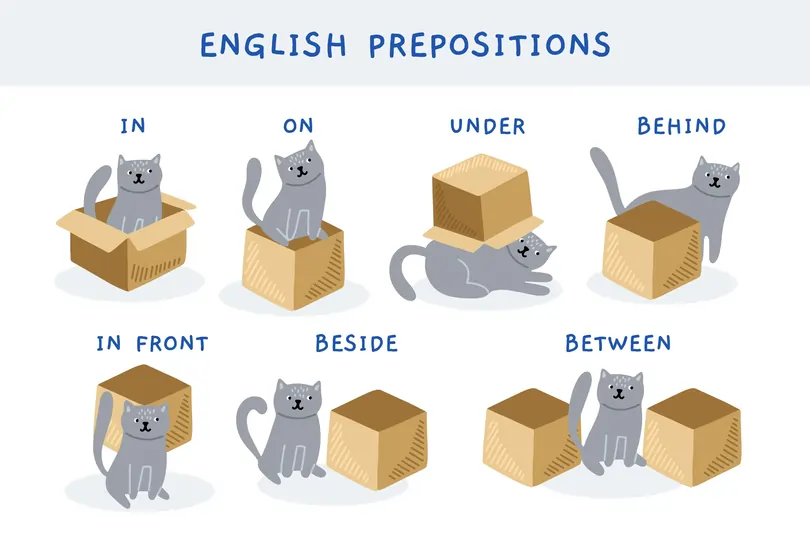Synthesis & Transformation: Reported Speech
In this article, we will go through Creating a problem in Composition Writing. We will also be going through the topics of Reported speech and Direct Speech. All these topics are as per the requirements of the Primary 5 English and PSLE levels.
Composition Writing: Creating A Problem
The title/theme of the story tells you if you’ll need one.
- Establish the normal
You need to set the background of the characters. E.g. in our normal society, everyone cannot perform magic. If such a society is the setting for the story, then if any one person can perform the magic, he is out of the normal - he is abnormal. So, that is your problem statement.
But in a society like Harry Potter’s, everyone can perform magic. Therefore that is the normal state. Now, in such a society, if someone wakes up one fine day to find that he has lost his magic powers - then that person becomes the problem statement.
- Create a connection
You need to provide an emotional connection with your characters.
- Impactful yet realistic
The story has to leave an impact. At the same time, it should be set in a real environment and should sound doable.
Practice Questions - Creating A Problem
Question 1:
How will the reader feel if a story has NO problems?
- They will definitely feel bored.
- It depends on the topic; the reader will enjoy a happy story with no problems.
- The reader will feel a connection with the supporting characters.
- It will be excellent as problems cause stress, and all stress is bad.
Solution:
Option 2
Question 2:
Do you remember the FIRST STEP to CREATING AN EFFECTIVE PROBLEM?
- Establish what is “normal” in the story.
- Write all the dialogues.
- Begin your story with a conclusion.
- Conclude your story with a famous quote.
Solution:
Option 1
Explanation:
Option 1 - Establish what is ‘normal’ in the story. This is the most important step
Option 2 - writing dialogues does not help to create an effective problem.
Option 3 - We do not start the story with a conclusion.
Option 4 - Conclude with a famous quote is for the ending and not the starting of the story.
Question 3:
Tension in the story can make it very exciting and keep your reader hooked. Which of the following creates the most tension?
- The problem is small and has an obvious solution.
- An event or person threatens to take away something small and insignificant belonging to the main character.
- An event or person threatens to take away something important and significant belonging to the main character.
Solution:
Option 3
Question 4:
The story is about “A Careless Act”. Which of the following problems is most impactful?
- The main character witnesses a freak accident and quickly calls for an ambulance.
- The main character gets a severe allergic reaction after eating a random snack without first checking the ingredients.
- The main character’s shoelaces somehow come loose but a friend alerts him about it.
- The main character forgets to buy ice cream when he goes grocery shopping, but his mother merely shrugs it off.
Solution:
Option 2
Explanation:
Option 1 - It is not a careless act. On the contrary, calling an ambulance after witnessing a freak accident is a very thoughtful act indeed.
Option 2 - It is a careless act. The main character must be careful not to eat the things he is allergic to. Knowing that he is allergic to certain ingredients, but still eating them without checking the ingredients is an example of a careless act.
Option 3 - Since the friend alerts the main character about the loose shoelace, then it is not a careless act.
Option 4 - Unrelated option to the question asked.
Question 5:
So again, the steps you can follow to create a good problem are:
- End the story with a moral, feeling, hope, or decision (previously taught as MFHD).
- Introduction, rising action, climax, falling action, conclusion.
- Establish the normal, create a connection, and ensure the problem is impactful yet realistic.
- Leave the reader clueless about the setting of the story.
Solution:
Option 3
Explanation:
Option 1 is suitable when we are writing the ending of the story and not the problem in the story.
Option 2 indicates the composition structure. It gives guidelines to be followed while writing a story. It should have an introduction, then we slowly build the climax, after the climax, we start to slowly wind up and we finish with the conclusion.
Option 3 is the guidelines to be followed when stating the problem in the story.
Option 4 is a sure way to make the reader frustrated and hence we lose the reader in the process.
Synthesis & Transformation
Reported Speech / Indirect speech
Place
Pronoun - he / she / they / them / it / us / these / those
Time
Tense - present tense changes to past tense; past tense changes to past perfect
Reported speech is also known as “indirect speech”. It means telling someone what was said, after the fact.
- Example of direct speech: “I am happy,” said Dante.
- Example of indirect speech: Dante said that he was happy.
Practice Questions - Reported Speech
Question 1:
The boy asked the pregnant lady, “Do you want my seat?”
The boy asked the pregnant lady __________.
- The boy asked the pregnant lady if you want my seat.
- The boy asked the pregnant lady, do you want my seat?
- The boy asked the pregnant lady if she wanted his seat.
- The boy asked the pregnant lady if she wants his seat.
Solution:
Option 3
Explanation:
Tense - Present - Do, want ---- Change it to past tense
Pronoun - You ----- change the pronoun to refer to the pregnant lady - she
Question --- change it to -- ‘if’ or ‘whether’
Question 2:
Ulsar asked her mother, “Where did you keep the book?”
Ulsar asked her mother __________.
- Ulsar asked her mother where is the book.
- Ulsar asked her mother where she had kept the book.
- Ulsar asked her mother where did she kept the book.
- Ulsar asked her mother where she was keeping the book.
Solution:
Option 2
Explanation:
Did and keep - Past tense. So, change it to Past perfect -- had is the clue
If the question has ‘where’, you keep it as ‘where’ in the reported speech too.
Question 3:
The child told her mother, “I want some magic candy.”
The child told her mother __________.
- The child told her mother that he wanted some magic candy.
- The child told her mother about her desire for some magic candy.
- The child asked her mother for some magic candy.
- The child told her mother that she wanted some magic candy.
Solution:
Option 4
Explanation:
The child told her mother ---- This indicates that the child is a girl, so we use the pronoun she
Want is in present tense --- so we change it to past tense
Question 4:
Katie reminded her brother, “Finish your work quickly.”
Katie reminded __________.
- Katie reminded her brother to finish his work quickly.
- Katie reminded him to finish his work quickly.
- Katie reminded her brother to finish her work quickly
- Katie reminded her brother to be quick and finish his work.
Solution:
Option 1
Explanation:
Katie reminded her brother --- “your” refers to the brother ---- so it will change to his
When it is an instruction ---- you have to add ‘to’
Indirect Speech To Direct Speech
Let’s try it the other way around: reported/indirect to direct speech.
Practice Questions - Direct Speech
Question 1:
Hannah asked us who had shifted her books the previous day.
Hannah asked us, “__________.”
- Hannah asked us, “Who had shifted my books the previous day?”
- Hannah asked us, “Who shifted my books yesterday?”
- Hannah asked us, “Which one of you shifted my books yesterday?’
- Hannah asked us, “Who shifted my books the previous day?”.
Solution:
Option 2
Explanation:
Who - pronoun --- we keep it the same
Had shifted - is past perfect --- it changes to past tense in direct speech
Her books - pronoun --- changes to ‘my books’
Previous day - when it is indirect speech it is fine but in direct speech it is ‘yesterday’
Question 2:
Maxine told Simba that he should take charge of the group.
Maxine told Simba, “__________.”
- Maxine told Simba, “You should take charge of the group.”
- Maxine told Simba, “You should be the leader of the group.”
- Maxine told Simba, “He should take charge of the group.”
- Maxine told Simba, “You should be the one in charge of the group.”
Solution:
Option 1
Explanation:
He, when changed from the reported speech to direct speech, should be ‘you’.
As Maxine is telling something to Simba, she is giving instructions/talking to him.
Question 3:
The waitress asked me what drink I would like to have.
The waitress asked me, “__________”.
- The waitress asked me, “What drink you would like to have?”
- The waitress asked me, “What drink would I like to have?”
- The waitress asked me, “What drink would you like to have?”
- The waitress asked me, What drink would you like to have.”
Solution:
Option 3
Explanation:
If it is “I would” in the reported speech, then it will change positions and become “would you” in the direct speech.
I will change into you in the direct speech.
Question 4:
The lady told her husband to buy a loaf of bread when coming home that night.
The lady told her husband, “__________”.
- The lady told her husband, “Buy a loaf of bread tonight.”
- The lady told her husband, “Buy a loaf of bread when coming home tonight.”
- The lady told her husband, “Buy a loaf of bread when coming home tonight?”
- The lady told her husband, “To buy a loaf of bread when coming home tonight.”
Solution:
Option 2
Explanation:
To in the reported speech means that in the direct speech, it is an instruction.
That night in the reported speech changes to ‘tonight’ in the direct speech.
It is an instruction and not a question. So, there is no need for ‘?’
Conclusion
In this article, we learned more about direct and indirect speech.
- Reported speech = indirect speech
- Common missed steps when changing direct speech to indirect speech:
- Changing present tense to past tense
- Changing past tense to the past perfect tense
- Take note of time references
- Example: “Yesterday” becomes “the day before”
We also went through the basics of Creating a Problem in Composition writing.


 SG
SG  VN
VN 


















